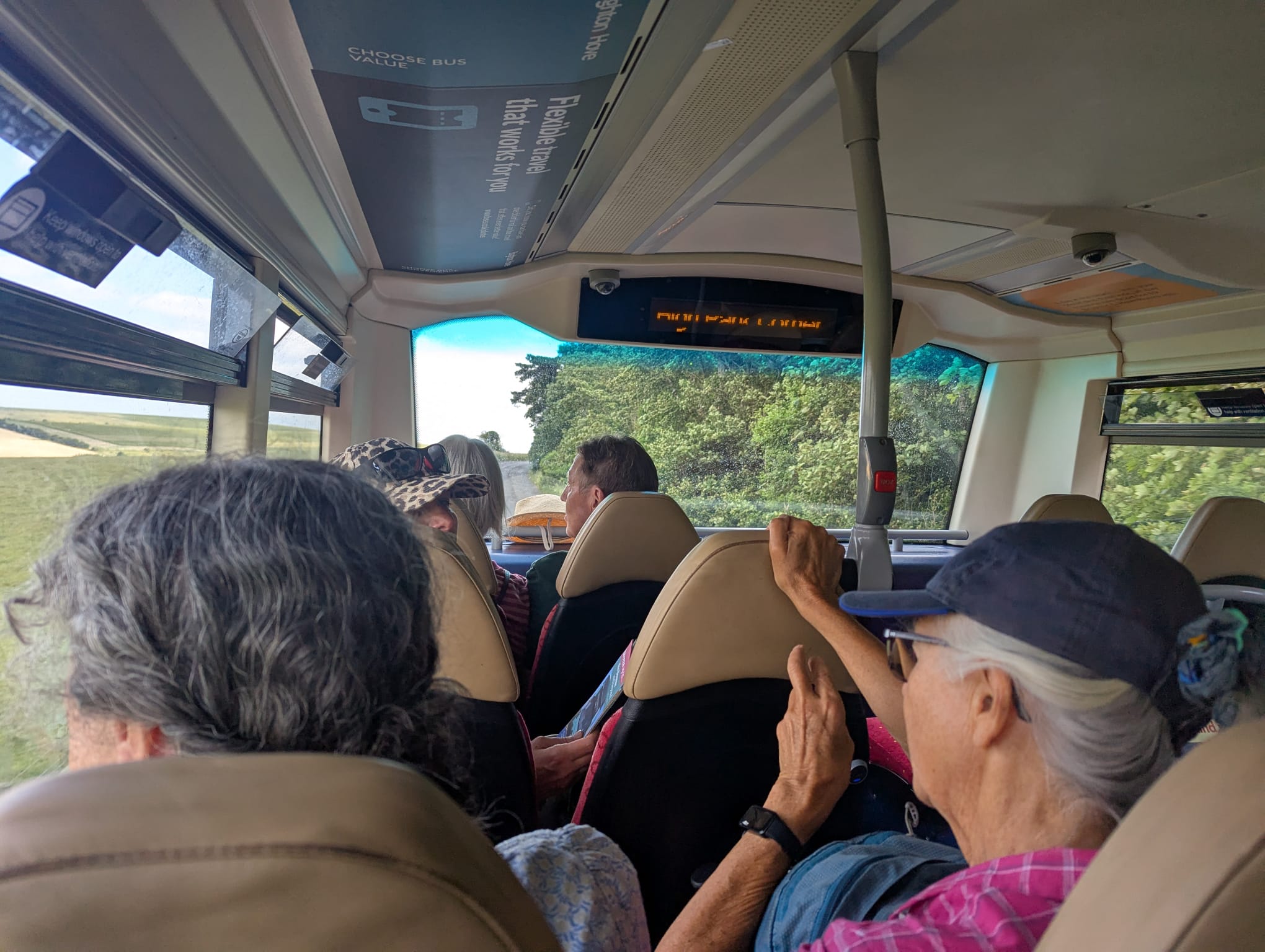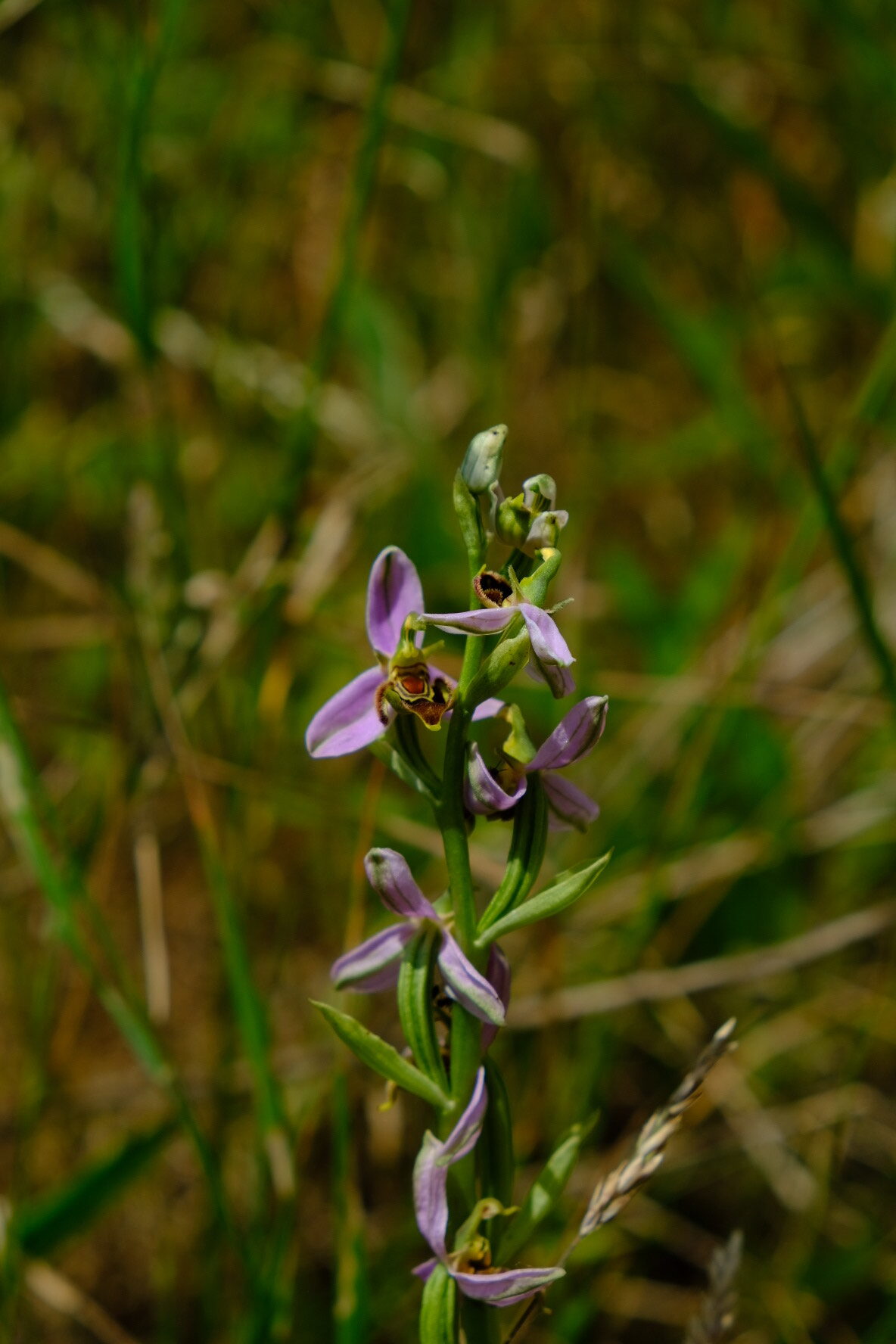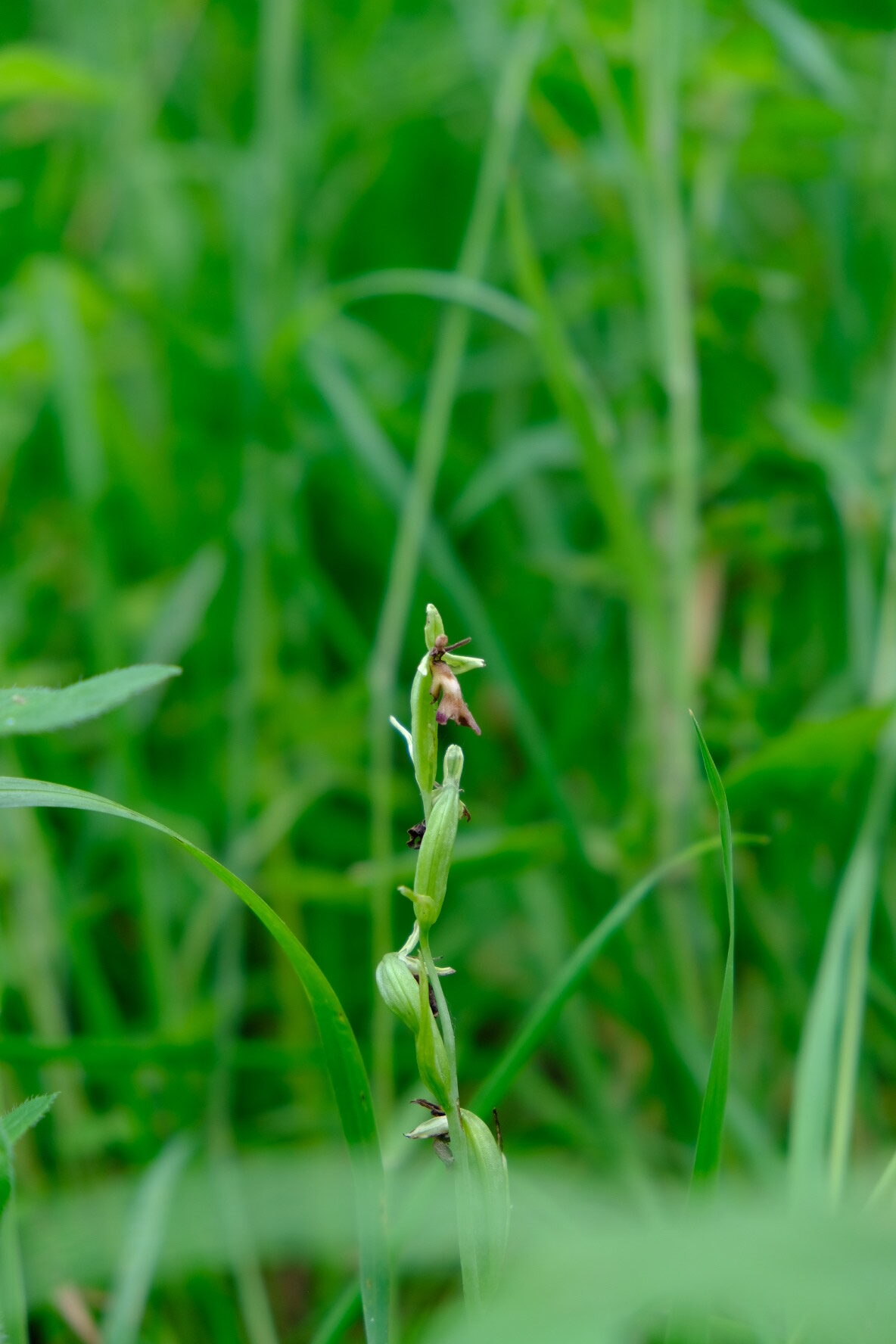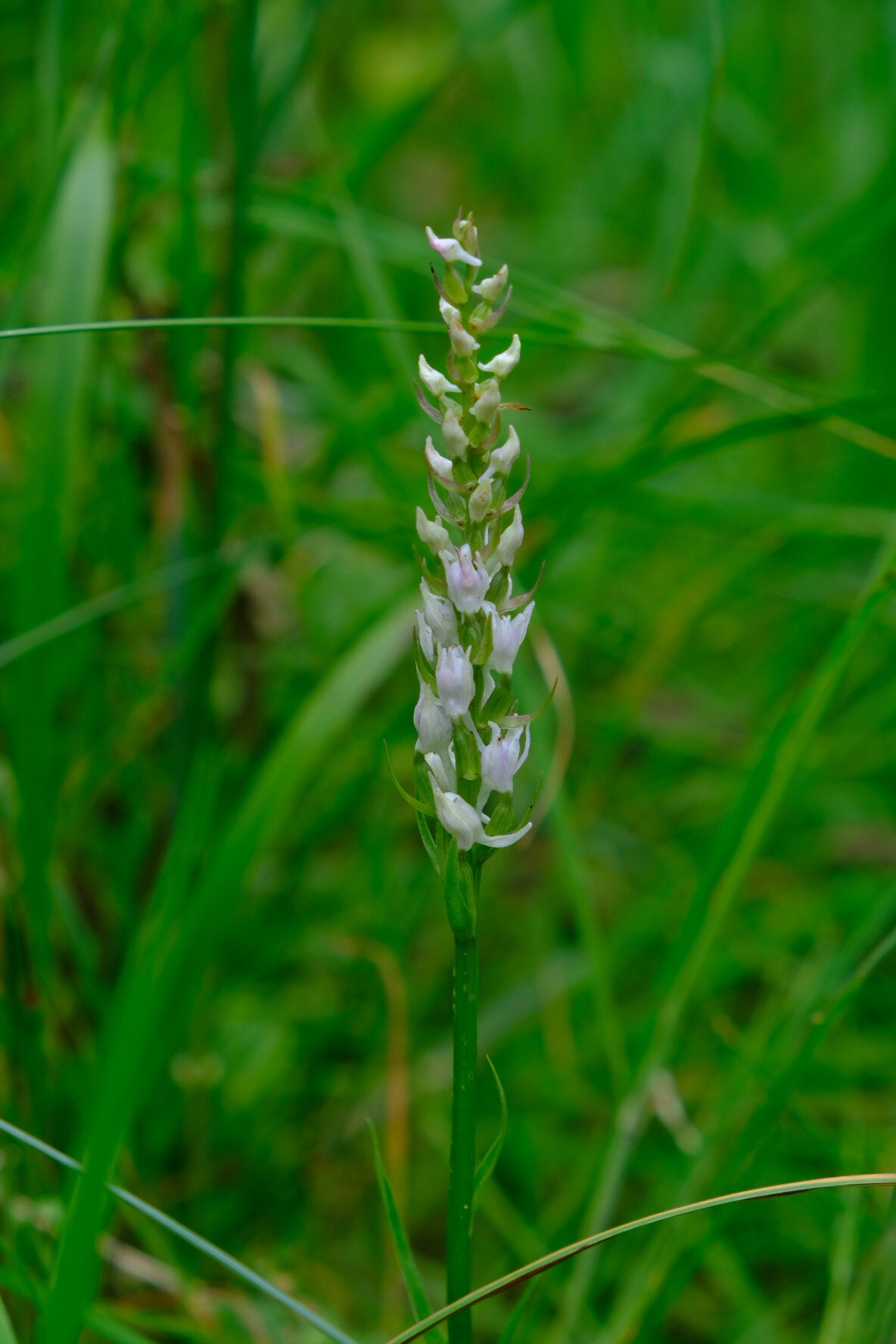
A Journey through the Sussex Downs
Ditchling Beacon
It was windy but warm as eleven trepid flower hunters set out to see what we could find between Ditchling Beacon and Wolstonbury Hill. It took us a little time to leave the car park being detained by both Field and Devil’s Bit Scabious as well as Common Mallow and both Mouse-eared and Oxtongue Hawkweeds. When we managed to leave, we ambled around the meadow just south of the car park which immediately offered more chalk grassland indicators including Bird’s-Foot Trefoil, Agrimony, both Horseshoe and Kidney Vetch, Pyramidal Orchids, Common Spotted Orchids (which were slightly past their best at the end of June), Eyebright, Fairy Flax, Dropwort, Common Milkwort, Black Medick and Greater Knapweed as well as Wild Thyme and Wild Marjoram. There were plenty of less fussy wildflowers as well, including White Campion, Common Poppy, Common Restharrow, Yellow Rattle, Selfheal and Rosebay Willowherb.
We then looped back to the South Downs Way where we enjoyed the view and were joined by two more flower hunters. Sadly, the promised ice cream van was nowhere to be seen!
Meandering Through the South Downs
Our route now gently descended from Ditchling Beacon, across the top of the South Downs National Park with Skylarks serenading us as we went.
We found more Pyramidal Orchids along our way as well as some Common Spotted Orchids, which were still in their prime. We noticed a lot of Yellow Rattle as we descended gently down the path running parallel to the South Downs Way and wondered if this had been sown to parasitise the grass on an area that had been previously farmed. There was plenty of both Lady’s and Hedge Bedstraw as well as a splendid purple Geranium, which looked very much like a garden escape of the variety Rozanne, but a very long way away from the nearest garden!
We passed through a gate and across a grazed field until the appearance of Gorse indicated that we had come to a patch of acid grassland, caused by a sandstone cap, a rare habitat on the South Downs. As well as the Gorse and Brambles here, we found Sheep’s Sorrel and the delightful little Tormentil.
We rejoined the South Downs Way for a while before diving off for a short detour, going past Red and White Campion as well as a group of Duke of Edinburgh award students picnicking across the path! This little detour ran along a field margin left by the farmer and rewarded us not only with many of the species we had already seen but also Sainfoin, Oxeye Daisy and several different colours of Lucerne, showing what a great contribution to biodiversity a field margin of just a few metres can contribute.
We walked on alongside a golf course where another wild margin yielded Sweet Cicely, Red and Bladder Campion, Agrimony, and Ground Elder. After crossing a road, we walked through a wooded hedgerow coming out onto a path and our first star of the day, a Bee Orchid, in its absolute prime. Common Blue Butterflies flitted on the bank visiting the abundant Bird’s Foot Trefoil and Kidney Vetch. Although by now our tummies were telling us that it was past lunchtime, we lingered to look at more chalk downland species, including Common Restharrow and Yellow-Wort. We eventually reached our picnic spot on Wolstonbury Hill and settled carefully avoiding more Pyramidal Orchids and some Dyers Greenweed to enjoy the view and eat a well-deserved lunch.
Wolstonbury Hill
If you want to travel fast, travel by yourself, if you want to travel far go with others but if you want to travel neither far nor fast travel with a botanist! By the time we finished lunch on Wolstonbury Hill we were well into the afternoon, so we had to prioritise where on the hill to explore. Knowing that there were treats in store on the Orchid Bank we decided to head there, taking in some Chalk Fragrant Orchids on the hillside on the way. The Orchid Bank did not disappoint. Although there were only one or two Greater Butterfly Orchids still in full bloom there were still plenty of Twayblades plus the second stars of the afternoon, some Fly Orchids. By this time a number of us needed to head back. The less energetic of us headed for the nearest bus, but our fittest and healthiest (not to say younger) companions re-traced their steps to Ditchling Beacon taking in tea and cake on their way. A wonderful day… we all got home safely, tired and happy.

On the bus ©J.Vasylevska

En route ©.Sheridan

Bee Orchid ©S.Fry

Fly Orchid ©S.Fry

©S.Fry




































